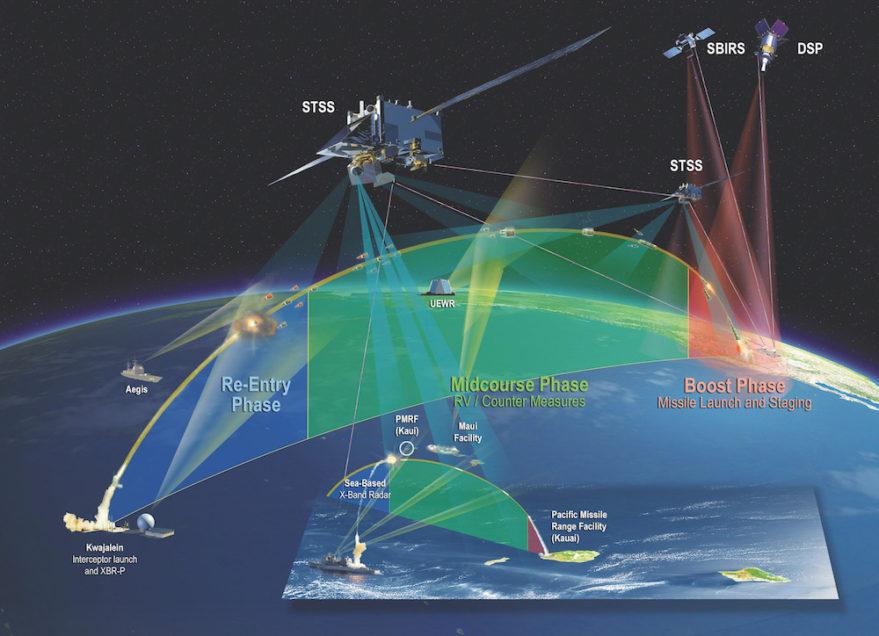Classification
Space Defense has two cases of active and passive.

Active space defense requires establishing a space target monitoring network and a corresponding command control system to perform uninterrupted monitoring of space goals, and find that enemy has threatened spacecraft, identify and determines its nature. The track is measured, quickly make decisions, and use appropriate weapons to cut. The interception means is a satellite, space shuttle, an aerospace station equipment, or a missile, laser weapon, etc. (see anti-satellite technology).
Passive Space Defense is to reach its own purpose in a certain own defense. Means are spacecraft camouflage, carry alarm system, own reinforcement and a star multi-purpose. One of the camouflage methods is to coat the protective layer of absorbing electric waves on the surface of the spacecraft, it does not transmit radio signals, so that the enemy is difficult to discover. Another camouflage method is a star, military and civilian use. Such as communication satellites while responsible for military mission such as missile warning, nuclear explosion detection, electronic reconnaissance, covering military purposes in civilians. If the satellite is installed with alarm system, once a sign of space attacks, the alarm system will immediately alert to the ground to take the corresponding countermeasures. For example, solar cells on satellites are suspended, and nuclear power can be used to change the nuclear power in order to defense.
Related Plan
In October 1983, the "Strategic Defense Promotion Promotion" program (also known as the Star War "planned by the US Department of Defense) is also part of the space defense. The main content is the main body or ground deployment to dominate the weapon (such as laser weapons, particle beam weapons, microwave weapons, including intercepted satellites, intercepted missile weapons system, in order to intercept and destroy in space Ballistic missile warhead.
Infrared detection and tracking system are critical in the ballistic missile defense system deployed by the United States (especially in terms of early warning and kinetic energy interceptive high-precision guidance of ballistic missiles). In order to further improve and improve its ballistic missile defense system, in recent years, the United States is further developing a new generation of ballistic missile defense infrared systems and technologies, including Tianji high orbit infrared early warning system, space monitoring and tracking system, airborne infrared detection system, and kinetic interception The infrared imaging guide is built to construct a whole-domain infrared detection weaponry system covering the early warning, Tianji low-track full-ballistic tracking, airborne flexion, and rising section tracking and bouquet tracing.
